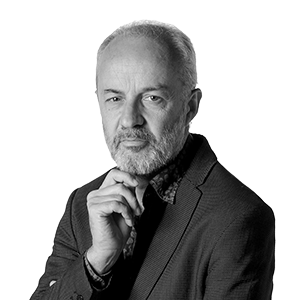Antoni Llena, an incredible circular life


Antoni Llena is one of the great living Catalan artists. Not many people know him. They will. His ephemeral and subtle art will endure. One day he will be immensely famous. Young artists will adopt him and go to New York to admire his works at the MoMA. In time, and in the face of his heavenly shiver, people will take photographs at the foot of the human towers in Plaça Sant Miquel or the David and Goliath from the Olympic Village. At home, children will make origami, imitating their creations using recycled paper and recycled materials. The time will come when everyone can be an artist, thanks to their shy and quiet revolution –a word he does not like–, thanks to his search for eternity in fleetingness. Smoke Memories (L'Avenç) finally casts the mystery of his incredibly circular life to rest. That of a shy boy born in Barcelona's Eixample district in 1942, who, still a teenager, unsure of himself and with only one faithful friend also named Antonio, decided to withdraw from the world and become a monk. This life apart, sometimes in the 14th century, has marked his anachronistic modernity, his aesthetic delirium. Always a little on the fringes, beyond or beyond. Even as a child, with the other Antoni, they didn't play soccer: they defended themselves from the dullness by fantasizing, inventing fabrications. They've done so all their lives.
"I am infinitely grateful" to his parents for not "taking me to a psychologist," for "their supposed neglect allowing my instinct to guide me." Thus, the child Llena shut himself away in a convent in Maresme. Would he have found himself in the spiritual dimension? Having escaped the Benabarre peasants, he had discovered nature in the summer: at the farmhouse, they drank from a hole that collected rainwater "and at dusk we lit up with hook lights fueled by oil." He has treasured that austerity. Nature and austerity were what he found, at the age of 15, in the convent, where he received his tonsure: "Hair in the shape of a ring-shaped ring." He became Friar Pacífico of Barcelona. His sexual desire melted angelically.
At 18, he joined the Capuchins in Sarrià to study philosophy in Barcelona. There, guided by Fathers Jordi Llimona and Joan Botam, "two giants," his world opened up to him. "The only sin is fear," Antoni Bernady called it, and he was already making strides as a fashion photographer. And the miracle of art happened: looking at fascicles of paintings in his tiny cell, he reconciled himself with reality. He met the painter during the Capuchin Festival of 1966. He left him his cell to sleep in, where Tàpies discovered a painting made with talcum powder, "oh dear!" That's how Tàpies's material art sponsored Llena's poor art,4 putting it in a transparent envelope and giving it to Tàpies. Stuffed sculptureThen would come the Dried air bubbles.
After leaving the convent and making a name for himself in art, he fled to London penniless and without speaking English. He cleaned many dishes, visited all the museums, discovered Miró... And in the end, he sold a letter from Tàpies to the restaurant owner to pay for his return ticket. With no job or income, he entered the service of Bernad, of whom Gae Aulenti said, "quite rightly," that he was born to make others happy.
After ten years without painting, one day Llena bought a bundle of papers and, like when he was a child, began to cut them up. The circle of life was taking shape. Then came the plastics, the wires... Fragility. And ultimately, the great public sculptures, like gestures caught in the air. Invented beauty alongside the inseparable Bernad: "Rilke says that love consists of two solitudes that mutually respect and revere each other; and Valéry, that it consists of being able to grow old stupidly together."
